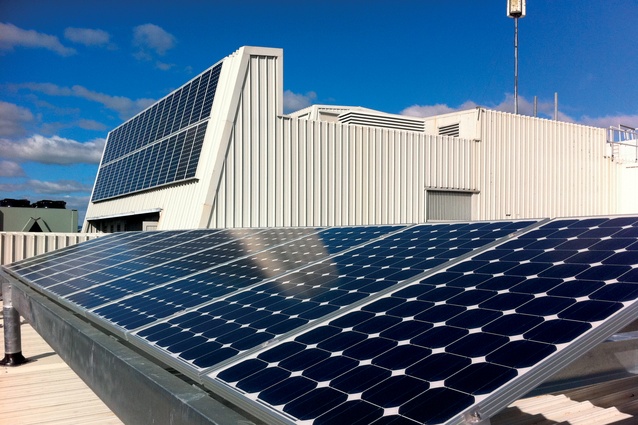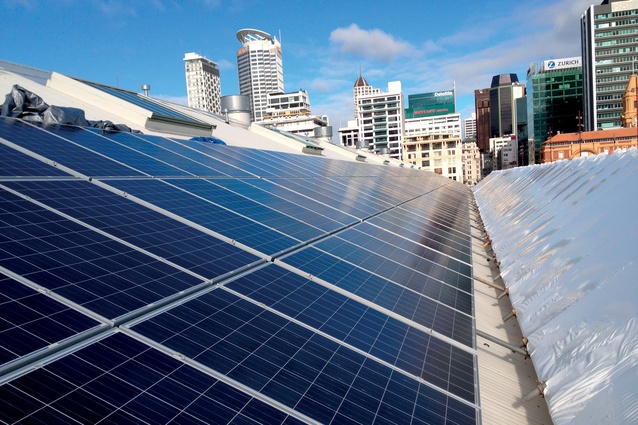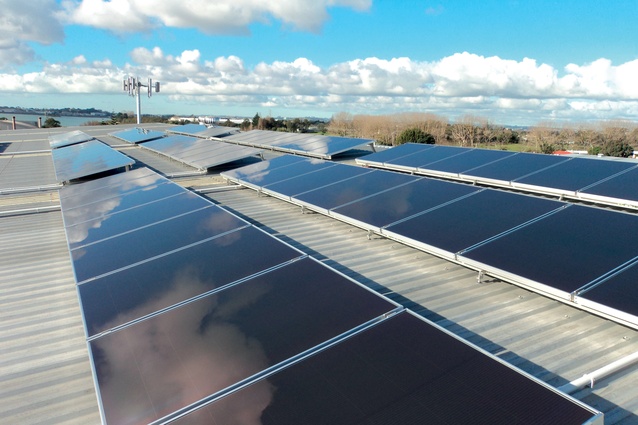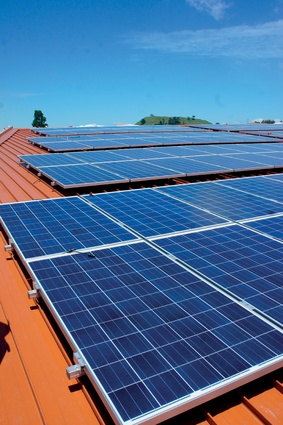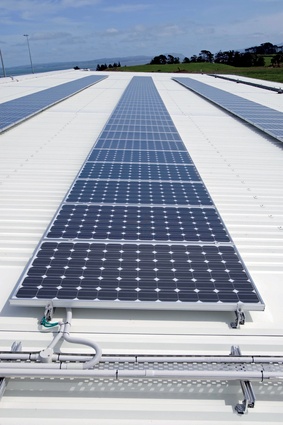Clean green image
What makes advertising such big business is that it sells us a vision, mostly fantasy, of what our lives could be if only we owned XYZ product. For the most part, this is fairly benign stuff. However, there is a danger that if we swallow the message hook, line and sinker we begin to believe our own press.
Case in point, the New Zealand Tourism 100% Pure campaign that was launched in 1999 and continues today. While there is some debate over whether the message was selling New Zealand as an ‘experiential destination’ or as a ‘natural wonderland’, the imagery certainly went a long way to convincing people – including New Zealanders – that the country was the last great hope for all things environmental.
One needs only to look at our environmental record over the past decade-and-a-half to see that that’s not wholly the case. Still, it’s not all doom and gloom, sustainability is a hot topic across all sectors of society and technology is helping lead the way towards a clean, green future for us all.
Think sustainable technology, and what immediately springs to mind is solar. Solar technology is not particularly new, however, NASA was using solar panels in space in the late ‘50s. What is surprising, however, is the lack of up-take, particularly in New Zealand, of the technology over the last 60 years.
Mechanical engineer and sustainable design advocate Neil Purdie believes that part of the problem lies with governance.

“Currently, there are no specific guidelines around the installation of sustainable technologies such as solar panels and wind turbines, rather they’re just part of the standard building consent process. A more individualised, streamlined process would definitely remove some of the intimidation aspect, particularly for the residential sector.”
Similarly, unlike many other countries, particularly in Europe, there are no incentive schemes to encourage Kiwis to make the shift to a solar-based system. The upshot of this is that although the technology itself has become exponentially cheaper in recent years, the upfront costs still act as a stumbling block and are seen by non-occupier owners as an unneeded expense.
“Uptake from individuals will only go so far,” says Purdie. “The real winners are the owner-occupiers. If you look at a traditional landlord-tenant scenario, the owner pays the capital costs of the building, while the day-to-day bills are passed on to the tenant(s). Unless the landlord is particularly in favour of the technology, there’s no real reason for them to go down that path.”
David Reid, director of Reid Technology agrees. “In the current market, the ideal solar user is the owner-occupier of a commercial property, particularly one with a high power usage during peak demand.
“For this person, solar is a ‘no-brainer’ decision. It can be easily accommodated for at the design stage of a build or just as easily retrofitted to an existing roof. Worldwide manufacture of solar panels has skyrocketed in recent years, which has in turn, seen the price drop dramatically – to an estimated 250 times less per quantity watt today than in 1970.
“Obviously, for us in New Zealand, there are other factors to take into account – particularly as there is no manufacturing here – such as fluctuations in the currency market, which will affect domestic prices, but on the whole, solar is an economically sound investment. Take, for example, a large commercial system where the owner has paid for it in full, with an internal rate of return of 8.2%, that owner will recognise a simple pay back in around nine years.”
It’s not just the commercial industry that can benefit; local government, private industry and civic institutions have all switched on to solar power.
Auckland International Airport Limited, the holding company for Auckland airport, has installed solar water heating, along with the largest photovoltaic array in the southern hemisphere on the international terminal roof. The solar water heaters provide hot water for public restrooms while the photovoltaics contribute energy for corridor lighting.
Hubbard Foods has also set a benchmark with the installation of the country’s largest thin-film solar panel array, which generates enough electricity to power the lighting for its finished-goods warehouse, comparable to the energy usage of three-and-a-half households.
The University of Waikato has merged sustainability with education with its solar system. Comprising 92 modules, the system is split across three roof planes of the student centre, one of which is near vertical. The fully working system was designed to allow for a comparison of the solar power generation of four different brands of solar modules.
Auckland Council, too, has thrown its hat into the sustainable energy ring with the installation of a 68kW solar system on the roof of the recently completed Te Oro Centre in Glen Innes. Comprising 256 solar panels the system is expected to generate approximately 15 per cent of Te Oro’s power needs, saving the centre an estimated $350,000 on associated energy costs over the next 25 years.
The council says the system is part of its long-term plan to reduce energy use and greenhouse gas emissions – Te Oro’s solar power system is expected to reduce emissions by 17 tonnes of CO2 per annum, the equivalent of 58 return trips between Auckland and Invercargill.
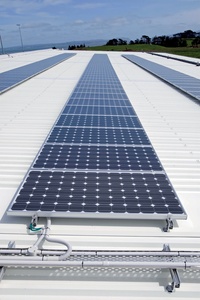
While these examples all represent a positive step forward, Purdie believes a greater change of mindset is still required.
“Our commercial building code is still light years away from global standards. At the moment we have a scenario where the decision to utilise solar is partly environmental and partly economic. True inroads will be made when the decision becomes fully economic and that will only come with a shift towards a distributed infrastructure model – mixed-use developments that include transportation modes, residential accommodation and commercial/retail tenancies.
“What you end up with is an essentially self-supporting system where technology and lifestyle exist synergistically. That is; solar panels on car parks and roofs power the lighting, rainwater harvesting satisfies irrigation and non-potable needs, public transport moves people to and from and residents patronise the retail and commercial tenancies – buildings not just being buildings but becoming something much more functional.”
Such a shift in public perception is still a long way off in New Zealand where the dream of a quarter-acre block is still seen as an attractive and viable option.
While technology advances at ever-increasing rates, wholesale social change is still incremental, says Reid.
“The industry is continually adapting and bringing on stream more advanced products – glass-on-glass solutions – and innovative ways to ensure greater uptake. For example, one of the emerging trends we’re seeing overseas is solar system leasing, where there is no upfront costs for the building owner.
“That type of scheme could prove popular somewhere like New Zealand where economies of scale make manufacture of solar systems a non-viable option.”

